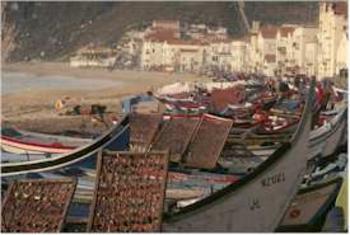
Into The Atlantic

Cadiz, Spain
After our relaxing day at sea, we arrived in Cadiz, Spain at 9 am on May 9. I like Cadiz. It is one of the oldest cities in Europe, founded in 100 B.C. by the Phoenicians who called it Gadir. Subsequently, it became a Roman naval base until A.D. 1262 . The real boom period came with the discovery of America. Christopher Columbus sailed from Cadiz on his second and third voyages. It grew into one of the wealthiest and most cosmopolitan cities in Spain. We took the city highlights tour and especially enjoyed the old city. It is North African in appearance and immensely intriguing -- a cluster of narrow streets opening onto charming little squares. One is never very far from the bay in Cadiz, and the waterfront drive provides a marvelous panoramic view of the sea. Cadiz, although old, is quite clean compared to other cities in southern Europe. I'd like to go back to Cadiz and its environs. For now, it's back to the ship as we sail for Lisbon, Portugal at 7 pm. We thought we might get up early to see the lights of Gibraltar, but when we learned that we would pass "The Rock" at 4 am, we decided to give it a miss. Those that did get up said all they saw were a few twinkling lights that could have been any seacoast at night.

The cathedral in Lisbon
In its golden age, Lisbon was called the eighth wonder of the world. Returning travelers boasted that its riches rivaled those of Venice. One of the oldest maritime centers in history, Lisbon has a fantastic record of trade. Much of this is attributed to Prince Henry the Navigator. We had to make a choice here. It was either explore Lisbon or visit "the timeless villages" of Portugal. We opted for the villages. It is great to visit large cities, but we feel you get to really know a people and their culture by visiting a country's small towns and villages. We drove through the very scenic countryside to Obidos, a perfectly preserved 13th century community. It was all that and more; the cobblestone streets, the tiny whitewashed cottages with flowers in their window boxes, the little shops with regional crafts. We bought a hand-painted bowl there.

The beach at Nazare
The next stop was Nazare, Portugal's most famous fishing village. Although a popular resort, the old traditions live on in Nazare. The fishermen wear bright patch-quilted shirts and pants and their women wear wide, pleated knee-length skirts over several petticoats. They wade into the water to help their husbands beach their boats. We had a very good seafood lunch in a seaside café and then walked along the beach to see the colorful fishing boats with carved and painted magical eyes on the prows for good luck. From Nazare, we drove to Alcobaca, home to a beautiful Cistercian abbeys dating from the Middle Ages. The monastery houses the tombs of King Pedro and his murdered love, Ines de Castro. A pleasant ride along the coast brought us back to the ship for the 6 pm sailing to Porto.

Return To The Index

In its golden age, Lisbon was called the eighth wonder of the world. Returning travelers boasted that its riches rivaled those of Venice. One of the oldest maritime centers in history, Lisbon has a fantastic record of trade. Much of this is attributed to Prince Henry the Navigator. We had to make a choice here. It was either explore Lisbon or visit "the timeless villages" of Portugal. We opted for the villages. It is great to visit large cities, but we feel you get to really know a people and their culture by visiting a country's small towns and villages. We drove through the very scenic countryside to Obidos, a perfectly preserved 13th century community. It was all that and more; the cobblestone streets, the tiny whitewashed cottages with flowers in their window boxes, the little shops with regional crafts. We bought a hand-painted bowl there.

The beach at Nazare
The next stop was Nazare, Portugal's most famous fishing village. Although a popular resort, the old traditions live on in Nazare. The fishermen wear bright patch-quilted shirts and pants and their women wear wide, pleated knee-length skirts over several petticoats. They wade into the water to help their husbands beach their boats. We had a very good seafood lunch in a seaside café and then walked along the beach to see the colorful fishing boats with carved and painted magical eyes on the prows for good luck. From Nazare, we drove to Alcobaca, home to a beautiful Cistercian abbeys dating from the Middle Ages. The monastery houses the tombs of King Pedro and his murdered love, Ines de Castro. A pleasant ride along the coast brought us back to the ship for the 6 pm sailing to Porto.

Return To The Index

The next stop was Nazare, Portugal's most famous fishing village. Although a popular resort, the old traditions live on in Nazare. The fishermen wear bright patch-quilted shirts and pants and their women wear wide, pleated knee-length skirts over several petticoats. They wade into the water to help their husbands beach their boats. We had a very good seafood lunch in a seaside café and then walked along the beach to see the colorful fishing boats with carved and painted magical eyes on the prows for good luck. From Nazare, we drove to Alcobaca, home to a beautiful Cistercian abbeys dating from the Middle Ages. The monastery houses the tombs of King Pedro and his murdered love, Ines de Castro. A pleasant ride along the coast brought us back to the ship for the 6 pm sailing to Porto.

Return To The Index
